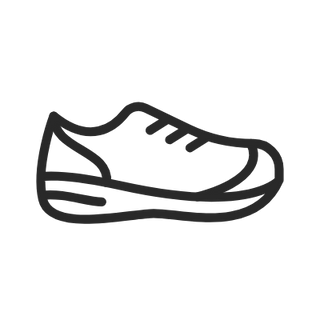Bunions are no laughing matter. They can affect anyone and contrary to common belief they don't just affect older people. That said, they are more common in women, with around 15% of women likely to suffer from bunions at some point.
If you're a bunion sufferer, don't worry. Help is at hand. Specially designed footwear is available that can ease the discomfort and help you get on with living your life to the full.
How can you decide which shoes are best for you? Read on for our comprehensive guide to shoes for bunions.
The Lowdown on Bunions
First of all, let's get to grips with the question, what are bunions?
Bunions are essentially bony lumps. They form at the side of the feet, by the joint of the big toe. They are caused when the bones in the front of your foot start to move forward. This pushes your big toe, causing it to point in the direction of the other toes.
Needless to say, this is rather uncomfortable. Especially because the skin over the protruding bone can get red and sore. If you notice that your big toe is starting to point the wrong way, then likely you're suffering from bunions.
How Are Bunions Formed?
There are two types of bunions - bunions and bunionettes. As described above, bunions form on the joint of the big toe. Specifically, over time, pressure on the metatarsophalangeal, or MTP, joint builds. The big toe gets out of alignment and the bump forms.
With bunionettes, also known as Tailor's bunion, a similar situation occurs on the joint of the little toe. Both may be caused by heredity - an inherited problem with the structure of the foot. This includes being flat-footed.
Your shoes can also play a big part in bunion formation. Wearing shoes that are too narrow or tight don't actually cause bunions. However, they make them much more likely to develop and can make them worse if you already have them. Other conditions such as arthritis can cause them, and playing certain sports can also bring them on.
What Are The Symptoms of Bunions?
Once bunions are fully developed, they are very noticeable - a swollen red joint and a big toe that is out of alignment. Other uncomfortable symptoms include not being able to bend the big toe, or a burning sensation when you bend it.
Some people find their big toe becomes numb and they can simply no longer wear normal shoes with any degree of comfort.
Our feet take a lot of pressure on a daily basis, so it's no wonder that bunions can be very painful. As the joint becomes more stiff and sore, it becomes more critical to wear the right shoes to prevent further deterioration.
How Can You Prevent Bunions?
Sadly, due to genetic factors, some of us are just more likely to develop bunions than others. However, there are ways to prevent bunions. Risk factors for developing bunions include wearing high heels and other types of shoes that don't fit properly. Choosing well-fitting shoes may help to prevent bunions from developing.
Bunions will not go away on their own. If you're looking for long-term relief, surgery is the only option. There are many different procedures, and a podiatric surgeon would be able to advise you on the right one for your particular condition.
While you're living with bunions though, you need shoes that give you support and relief. The right shoes will not only help you to walk with less discomfort but can help prevent the symptoms from getting worse.
How Shoes for Bunions Work
For those living with bunions, the NHS recommends wearing wide shoes, with a low heel and soft sole. Some retailers may offer wide-fitting shoes, but these are usually designed to accommodate those with naturally wider feet.
We offer a range of specialist shoes which have been developed to help people with bunions and other conditions which change the shape of the foot. They are designed with the anatomy of the foot in mind. They look to alleviate pressure and prevent further deterioration.
Wide Shoes for Bunions
When choosing wide shoes for bunions, look for ones that have been specially designed to comfortably accommodate bunions. Wide shoes are given an 'E' sizing. Usually, shoes marketed as wide fitting are either 2E or 4E.
However, for shoes specially designed for people with bunions, you will typically need much larger 'E' sizes. For example, 6E may be recommended for people with a serious foot condition, such as large bunions. The E refers to the tread width; the number refers to the depth of the toe box.
As bunions are sensitive to pressure both from the side and the top, it's important to choose shoes that are bigger in both areas. For example, choosing an EE size would only allow for a wider tread. This would not be suitable for someone suffering from bunions. Make sure it has a number such as 4, 6, or 8 before the E.
Having appropriately sized, wide-fitting shoes can make such a huge difference to your walking experience. Normal shoes can rub and aggravate the bunions, putting sideways and downwards pressure on them. Extra-wide shoes for bunions give your foot the space to move, but with the support they need.
Other Factors to Consider
Shoes designed for bunions give your feet space to sit naturally. They don't bunch the toes together. That's why you won't find pointed shoes for bunions. By bunching the toes together, they actually make bunion symptoms worse.
Shoes with a rounded toe allow the foot the space it needs. They don't put any additional pressure on the foot. Your foot can move naturally as you walk, greatly increasing your level of comfort.
The softness of the leather is also an important consideration. Choose shoes that are made with extremely soft leather uppers and provide plenty of cushioning. This will also reduce the pressure the shoe puts on the foot when walking.
Finally, consider the insole and heels. A high-quality, supportive insole is a must. This will provide cushioning that keeps the toes properly aligned.
Low heels also reduce pressure on the bunions. This doesn't mean no heels! You will find ankle boots with a low heel up to two inches are still on the table, as they don't exert as much pressure as shoes with a higher heel.
Ladies' Shoes for Bunions
Ladies' shoes for bunions come in a wide range of styles to suit all ages and occasions. While you won't find any high heels, it's still possible to get stylish shoes with a low heel and find styles to suit any look.
For ladies with moderate bunions, sizes up to 4E may be appropriate. For those with severe bunions, sizes from 6E and up are available. It's important to measure your feet correctly to find the size that's most appropriate for you.
We have split our recommended shoes for ladies with bunions into two collections; ladies shoes for moderate bunions, which has our 4E range and one for larger bunions. Our collection of ladies shoes for large bunions includes our 6E fittings with extra support in the insole.
From ankle boots and trainers to court shoes and pumps, there's no reason why your bunions should stop you from wearing the styles you love. Whether you're looking for something young and trendy, or something more traditional, there are styles available to suit everyone.
Imagine the relief you'll feel after struggling in normal shoes! No more rubbing or chafing. Silky soft leather uppers that put no pressure on your bunions. Supportive soles and cushioning give you that 'walking on air' feeling.
Men's Shoes for Bunions
For men living with moderate bunions, wide-fitting shoes in the 2E-4E range may provide the extra space needed. However, for larger, more severe bunions, it's important to get extra wide-fitting shoes, up to 8E to reduce the pressure.
As well as looking for the correct width, make sure that the uppers are super soft and well padded. As men's shoes are usually closed, it's important that when laced up or closed they continue to offer the protection that your bunions need.
A wide range of styles is available from robust steel-toe-capped work boots to smart loafers and comfortable trainers. Some styles feature Velcro fittings. They are comfortable and easy to close as well as being secure and highly adjustable.
We have split our recommended shoes for men with bunions into two collections; men's shoes for moderate bunions, which has our 4E range and one for larger bunions. Our collection of men's shoes for large bunions includes our 6E fittings with extra support in the insole.
Going barefoot with bunions might be tempting to reduce the friction. However, depending on your bunions, this may not be good due to the lack of arch support. As an alternative, slippers, or house shoes designed for those with bunions can give great support along with the comfort we all want at home.
Getting the Best Shoes for Bunions
The best shoes for bunions give you support, space, and comfort. A good insole, lots of cushioning, and extra soft leather uppers complete the package. They'll allow you to walk in comfort, safe in the knowledge that your feet are being well cared for.
We have exactly what you need and in all the styles you love. In fact, we have shoes for those suffering from all kinds of bunions!
Check out our comprehensive range of shoes for bunions today!




